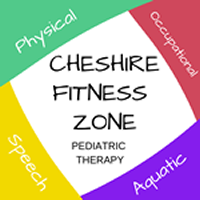DEVELOPMENTAL PLAY: Chapter 1
Helping your child learn and grow starts at a young age by interacting and playing with them. Follow along with Maddie to learn some fun playtime activities that you and your child can perform together!
*Please note the information described in the “What to expect” sections represent an average timeframe of when specific gross motor skills are achieved. Every baby is different and will have a different developmental timeframe. Please use this as a guideline for your baby’s developmental skills and a way to help encourage skills through fun playtime activities. Always reach out to your pediatrician if you have any specific concerns about your baby’s development.
Birth to 3 Months Old
What to expect?
- When placed on their tummy, they can begin to hold their head up to about 45 degrees between 1 and 2 months old and about 90 degrees when about 3-4 months old.
- When placed on their back, your child will be able to visually track objects and faces to the left and right. They will begin to reach out and touch toys in front of them. They will also begin to bring their hands to their mouth when given a toy.
- When placed on their side, your child will begin to reach with their non-weight bearing arm towards a toy.
How to play with your 0-3 month old baby?
Tummy Time
Tummy time is not always the most fun activity for your child. It is hard work for them at this age since they are working their arm and neck muscles to try and keep their head off of the floor. Try some of these tummy time positions in order to help make tummy time easier and more fun for your little one!
- Tummy time over a boppy: Tuck their forearms under their shoulders so that they are getting good weight bearing through their arms. You may need to help guide their arms into this position as they will likely move their arms around when they try to lift their head.

- Tummy time with rolled blankets under their arms: Tuck their forearms under their shoulders so that they are getting good weight bearing through their arms. You may need to help guide their arms into this position as they will likely move their arms around when they try to lift their head.
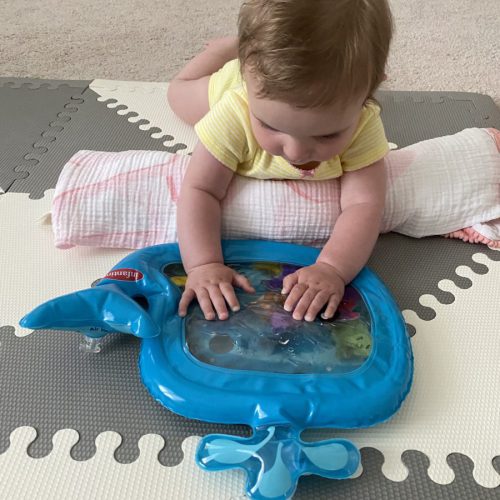
- Tummy time in front of a mirror: This is a great way to help your baby begin to lift their head off of the floor in order to look at themselves in the mirror.
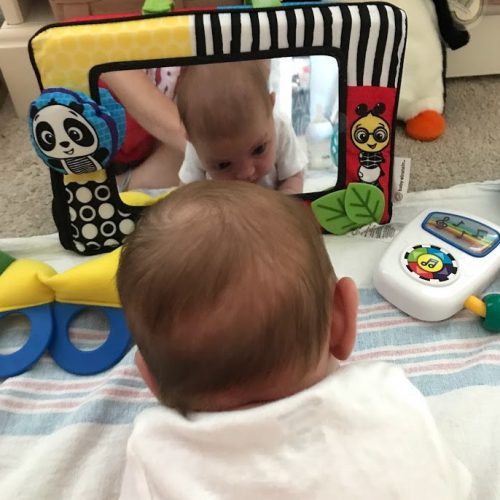
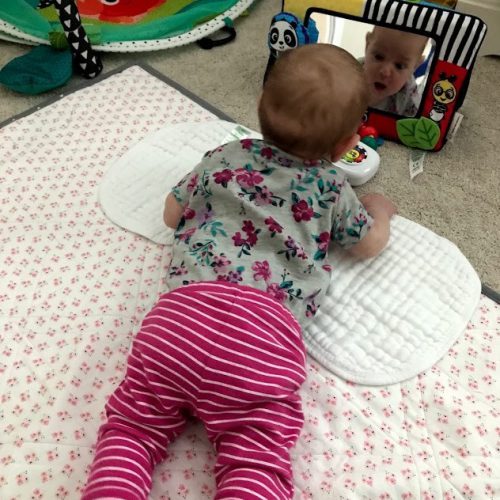
- Tummy time in front of toys of high contrasting colors, toys that light up, or water play mats: At this age, babies can see contrasting colors best such as black and white objects. Their awareness of different colors is also developing, so bright colors such as red, yellow, and green are great for babies to look at.
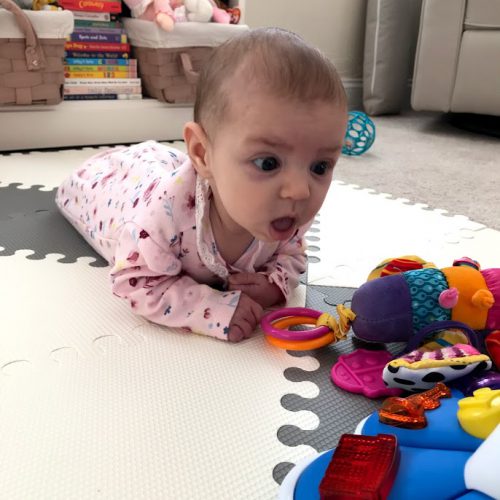
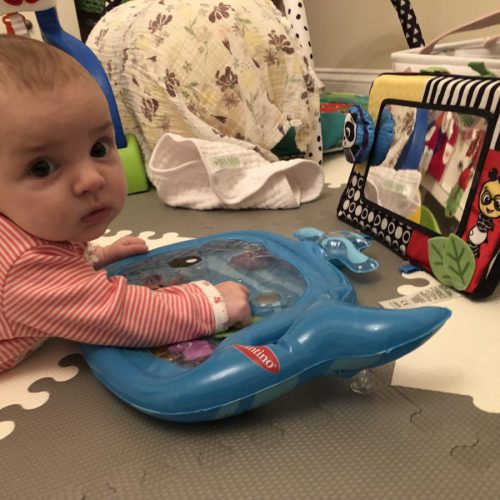
- Tummy time over parent’s lap/leg: Cross your legs and elevate your top leg so that baby is placed on an incline to make it easier for them to lift their head while on their tummy.
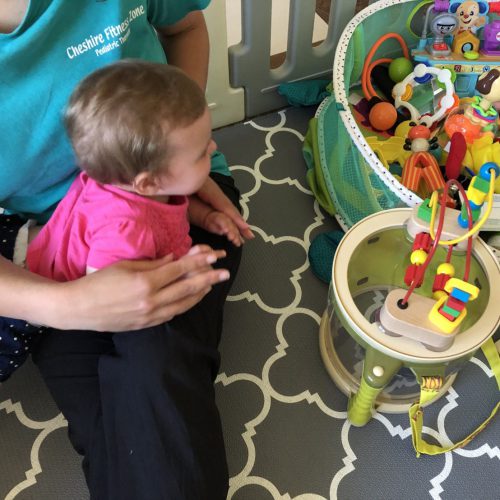
- Tummy time on parent’s chest: Position their forearms under their shoulders to help them push through their arms so that they can attempt to lift their head. When they are just a few days/weeks old, they can enjoy resting on their tummy on your chest to start getting used to tummy time position. As they get older, they will be able to push through their forearms and lift their head against gravity.

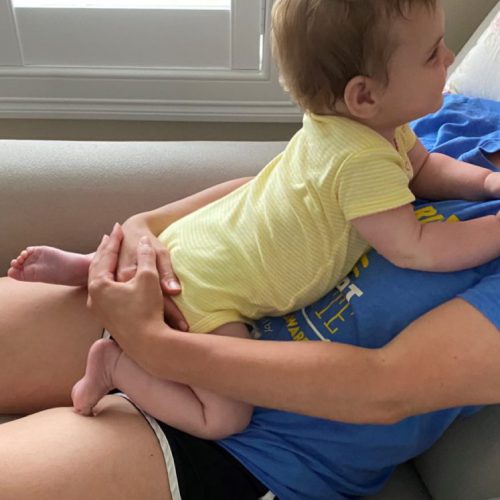
Superman position within parent’s arms: This is a fun way to do tummy time with your little one! You can “fly” all around the house or in front of a mirror so that baby is having fun but still working hard at lifting their head when in this tummy down position.
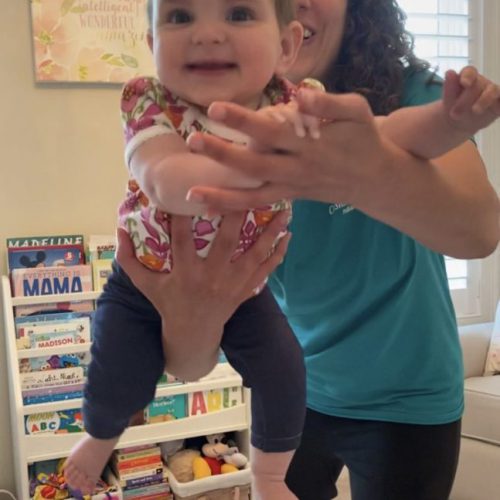
Tummy time over a physioball: This is a great position for babies who do not love tummy time on the floor or even over the boppy. The ball allows caregivers to easily adjust the angle and degree of difficulty for the child. For example, if baby is on the ball and you keep the ball close to your chest, your baby is performing tummy time on an incline (baby is more vertical) which is easier for them to lift their head. If this is too easy for baby, you can roll the ball forward so that baby is more horizontal – this will make it harder to lift their head up. Start with having baby in a more vertical position over the ball (bring ball back towards your chest) and progress to rolling the ball forward (away from your chest) so that baby is more horizontal as they are able to lift their head and tolerate this task.
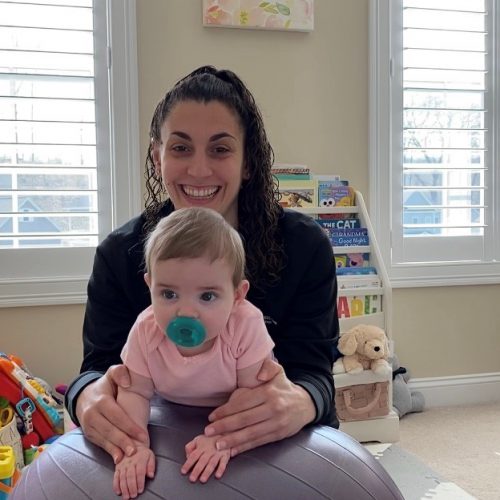
Back Play Activities
- Place light-up toys, toys of high contrasting colors, or musical toys to their left and right (alternate to each side during playtime activities) so that they begin to track and turn their head to engage in play with these toys.
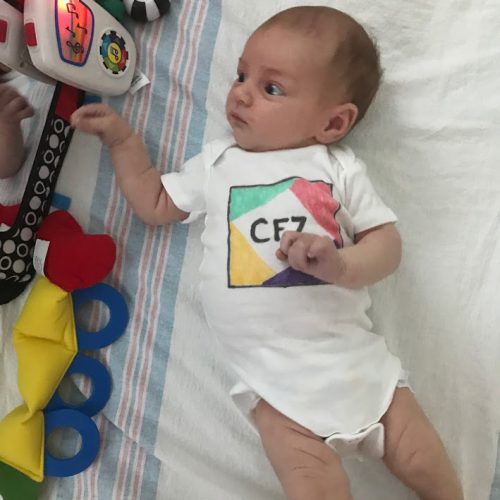
- Place toys above the child’s arms when playing on their back. This will encourage reaching with both hands overhead to bat/swat at the toys/objects. It will also help to improve their visual tracking/scanning skills as they look for the toys and watch it swing back and forth.
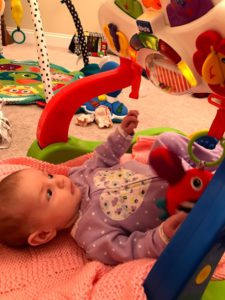

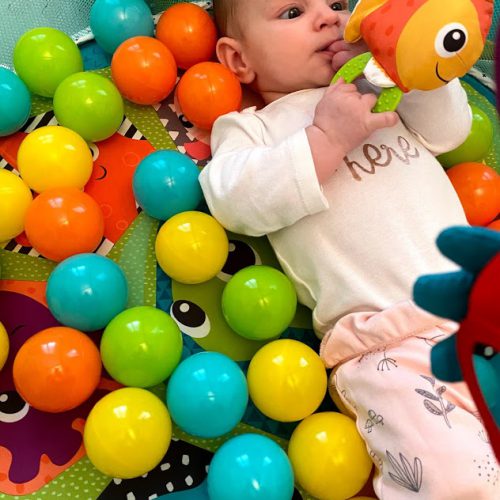
Place toys by the child’s feet when they are on their back. This will encourage them to initiate kicking in order to hit the toy. Try and utilize a toy that will make a sound (i.e. piano toy) in response to their kicks in order to further encourage this skill.
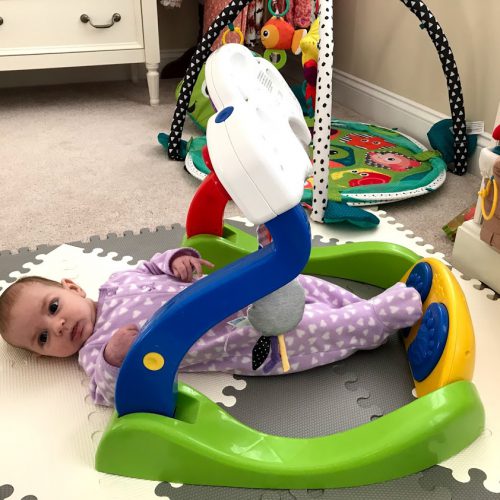
Sidelying Play Activities
- Place toys or a mirror to the left and right side (alternate to each side during playtime activities) and have your baby start to reach and hit the toys with their non-weight bearing arm.
- You may need to hold their hips to help keep them in this side position or you could place a small rolled towel behind their back to help them stay in this position. Sidelying play is important to help encourage baby to start rolling!
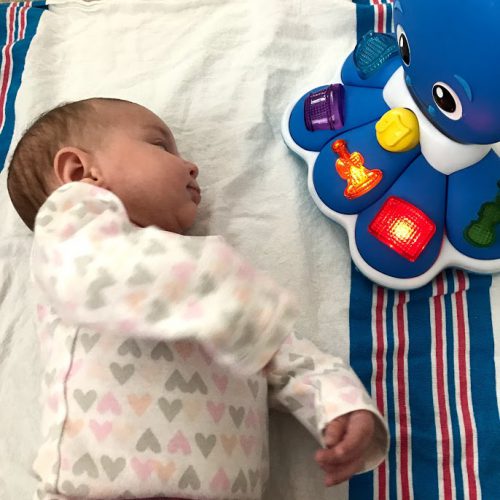
Want to continue (developmentally) playing with Maddie? Follow along as we outline why playing and interacting with your child is so important for their development.
If you are concerned your child is not meeting age appropriate developmental milestones, please take our quiz below.
Take Our Developmental Milestone Quiz!
As parents, we all want to ensure that our children are meeting crucial developmental milestones. Use this tool to see if your child is on the right track.
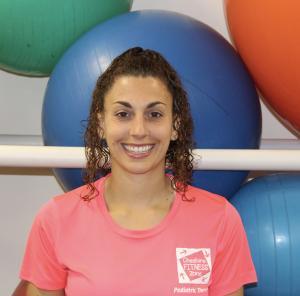
Amanda Morgan
Amanda attended Sacred Heart University and has been with Cheshire Fitness Zone since the beginning of her career as a Physical Therapist in 2012. She specializes in Aquatic Therapy, Constraint-Induced Movement Therapy and is a Children’s Yoga Instructor. In her spare time, she enjoys spending time with her family and friends, traveling, hiking, bike riding, going to the beach, teaching graduate students at Sacred Heart and cheering for the Patriots!
Amanda is the author of this exerpt with the help of her daughter, Maddie.
